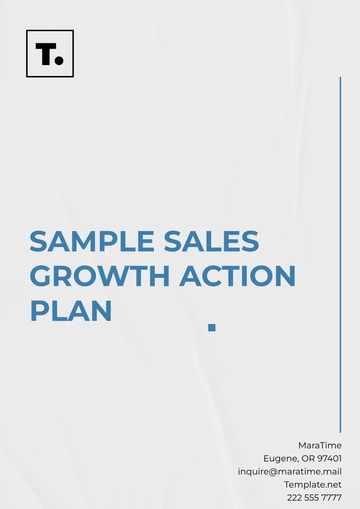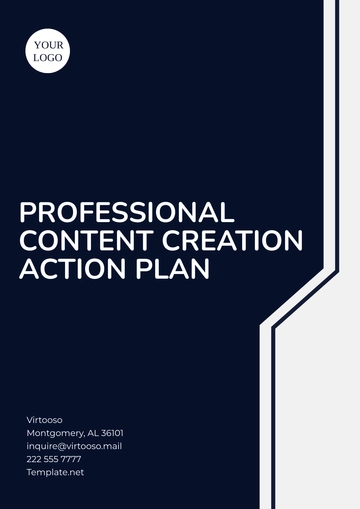Free Brand Marketing Campaign Action Plan

Prepared by: [Your Name]
Company: [Your Company Name]
Date: [Date]
1. Executive Summary
This Brand Marketing Campaign Action Plan is designed to elevate brand visibility, foster deeper engagement with target audiences, and drive significant business growth. By leveraging an integrated marketing approach, the plan utilizes a mix of both digital and traditional channels to effectively communicate the brand’s value proposition, ensuring a seamless customer experience and measurable results.
2. Campaign Objectives
The core objectives of this campaign are to:
Increase Brand Awareness: Amplify the brand’s reach through targeted messaging and strategic placements.
Enhance Customer Engagement: Foster deeper connections with the audience by delivering relevant content and interactive experiences.
Generate Qualified Leads: Drive new customer acquisition through effective lead generation tactics and conversion strategies.
These objectives will be accomplished through a well-coordinated multi-channel marketing strategy that aligns with the brand’s overarching business goals.
3. Target Audience
3.1 Demographics
A comprehensive profile of the target audience will be constructed based on key demographic factors, including:
Age: 18-45 years
Gender: All genders
Income Level: Mid to high-income brackets
Education: College-educated professionals
This profile will help ensure that all campaign initiatives are tailored to the specific needs and preferences of the audience.
3.2 Psychographics
To further refine the campaign’s messaging, we will explore the psychographics of the target audience, including:
Interests: Technology, innovation, sustainability, and lifestyle
Values: Quality, trustworthiness, and social responsibility
Attitudes: Desire for premium experiences, personalization, and exclusivity
Understanding these traits will enable us to craft emotionally resonant messaging that drives stronger engagement.
4. Strategy Overview
The campaign strategy focuses on:
Brand Positioning: Differentiating the brand through a unique value proposition that resonates with the target audience's needs and aspirations.
Messaging Framework: Clear, consistent messaging that highlights key brand attributes, such as quality, trust, and innovation.
Value Proposition: Emphasizing the benefits of the brand’s products/services, and solving specific problems for the target audience.
By aligning brand positioning with consumer expectations, the campaign will build stronger brand equity and foster lasting loyalty.
5. Marketing Channels
5.1 Digital Marketing
Social Media: Leverage high-engagement platforms (Facebook, Instagram, Twitter) to create shareable content, promote user-generated content, and initiate community-driven campaigns.
Email Marketing: Craft personalized email campaigns designed for different stages of the customer journey, focusing on retention, nurturing, and conversions.
Content Marketing: Develop diverse content formats—blogs, videos, podcasts, and infographics—focused on educating, entertaining, and inspiring the audience, while also enhancing SEO performance.
5.2 Traditional Marketing
Print Media: Strategically place high-impact ads in well-regarded industry magazines, newspapers, and local publications to reinforce brand presence.
Events and Sponsorships: Participate in key industry events, conferences, and sponsorships to strengthen brand credibility and establish authority in the market.
Direct Mail: Implement targeted mail campaigns using customer data to reach specific market segments with personalized offers.
6. Budget Allocation
A balanced allocation of the marketing budget will ensure the optimal mix of digital and traditional marketing efforts. Below is a proposed breakdown of the budget:
Marketing Channel | Budget Allocation (%) |
|---|---|
Digital Marketing | 50% |
Traditional Marketing | 30% |
Events and Sponsorships | 20% |
Note: A detailed budget table with specific figures will be included in the final presentation.
7. Implementation Timeline
The campaign will be rolled out over six months, divided into distinct phases. Each phase will have specific milestones, deliverables, and checkpoints to track progress.
Phase 1: Planning & Strategy Development (Month 1)
Phase 2: Content Creation & Channel Setup (Month 2)
Phase 3: Campaign Launch & Awareness Building (Months 3-4)
Phase 4: Lead Generation & Engagement Optimization (Months 5-6)
A Gantt chart with detailed timelines will be provided to guide the execution process.
8. Metrics and Evaluation
8.1 Key Performance Indicators (KPIs)
To measure the success of the campaign, we will track the following KPIs:
Brand Awareness: Web traffic analytics, social media reach, and survey data.
Customer Engagement: Social media interactions, content engagement (likes, shares, comments), and email campaign response rates.
Lead Generation: Number of new leads, lead quality, and conversion rates.
8.2 Reporting & Optimization
Regular performance reviews will be conducted at key intervals to evaluate the effectiveness of the campaign. Data-driven insights will be used to refine strategies, optimize tactics, and ensure the campaign stays on track to meet objectives.
Reports will include detailed analytics and actionable recommendations for continuous improvement.
9. Contingency Plan
A proactive risk assessment will be conducted to anticipate potential challenges and market fluctuations. A contingency plan will be in place, including:
Budget Reallocation: Ability to quickly shift resources between channels based on real-time performance.
Crisis Management: Swift response protocols for managing any negative publicity or unexpected disruptions.
Backup Strategies: Predefined actions to maintain campaign momentum, such as diversifying content formats or exploring alternative marketing channels.
This ensures the campaign remains agile and resilient in the face of unforeseen circumstances.
- 100% Customizable, free editor
- Access 1 Million+ Templates, photo’s & graphics
- Download or share as a template
- Click and replace photos, graphics, text, backgrounds
- Resize, crop, AI write & more
- Access advanced editor
The Brand Marketing Campaign Action Plan Template from Template.net is an editable and customizable solution designed to streamline your marketing strategy. Tailor every aspect to fit your brand's unique needs, ensuring a personalized approach to your campaign. Easily editable in our AI Editor Tool, this template makes planning efficient and effective.





























